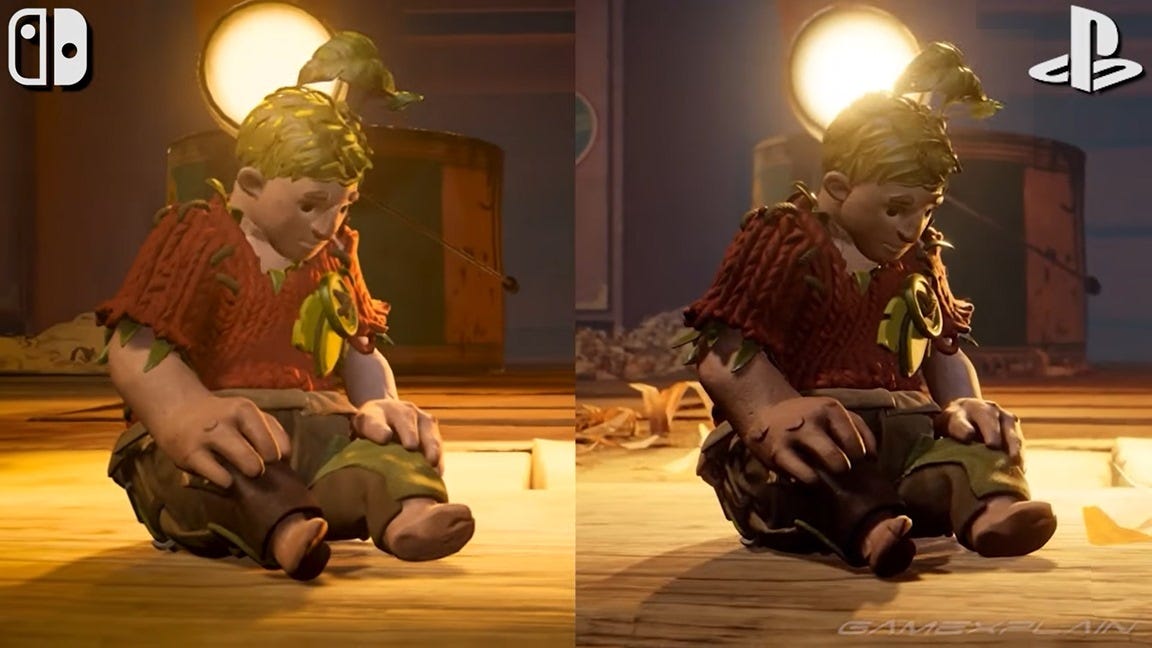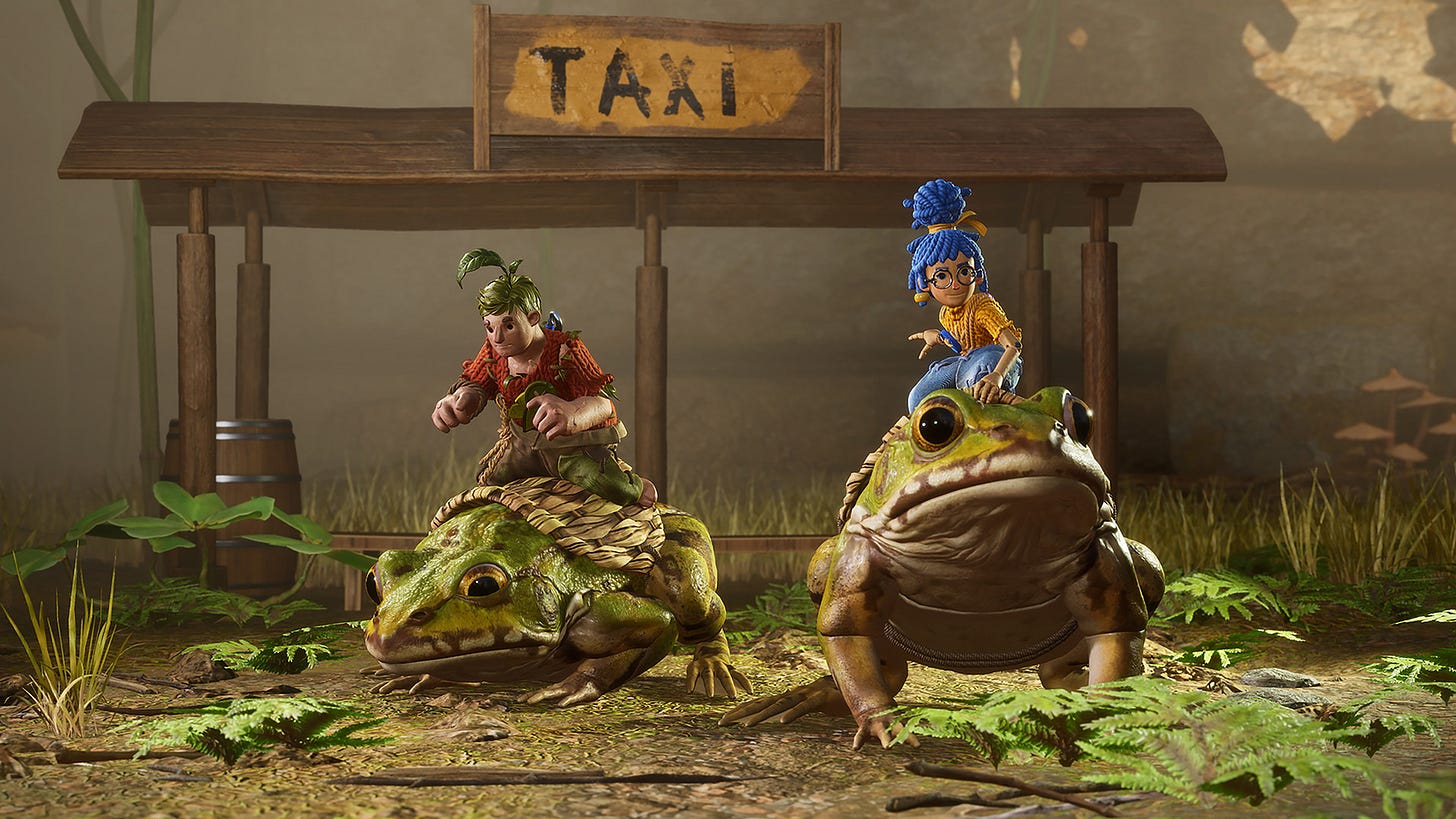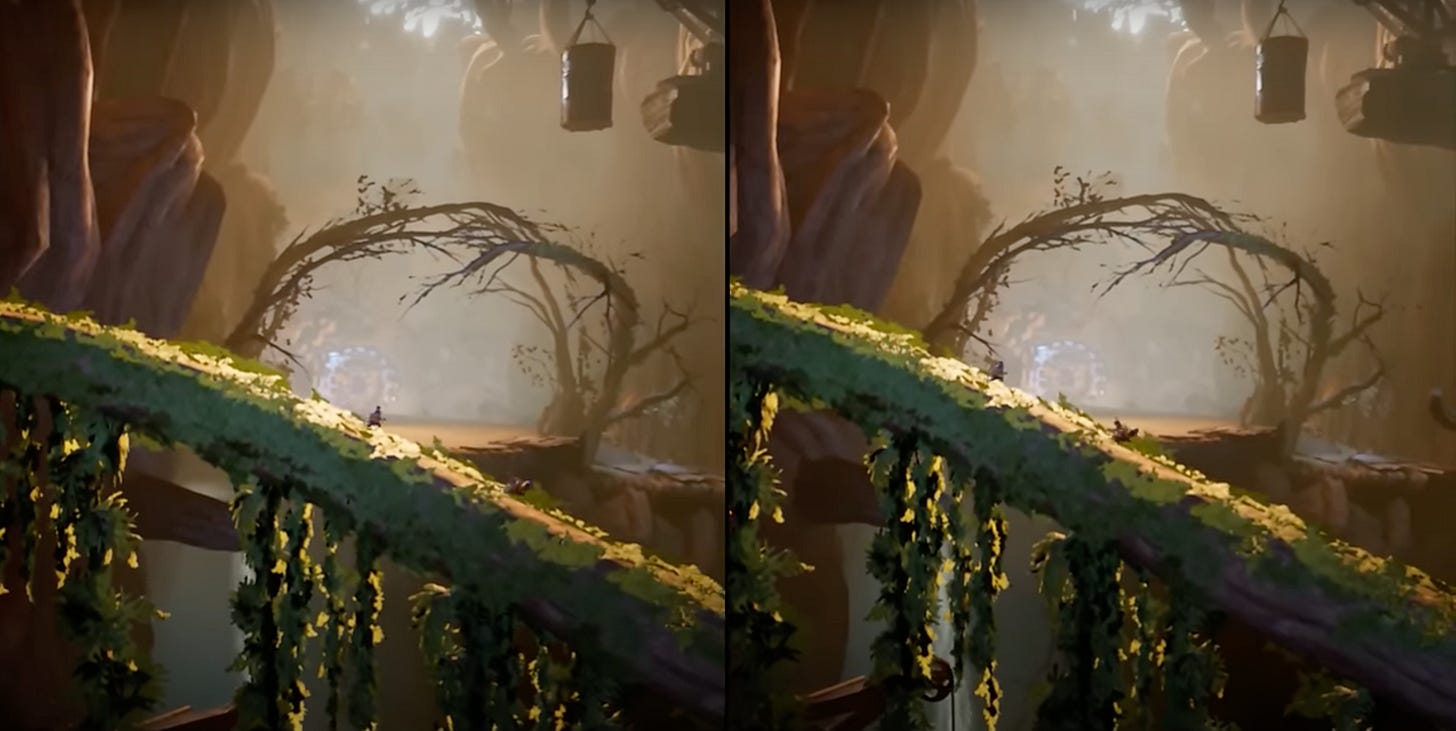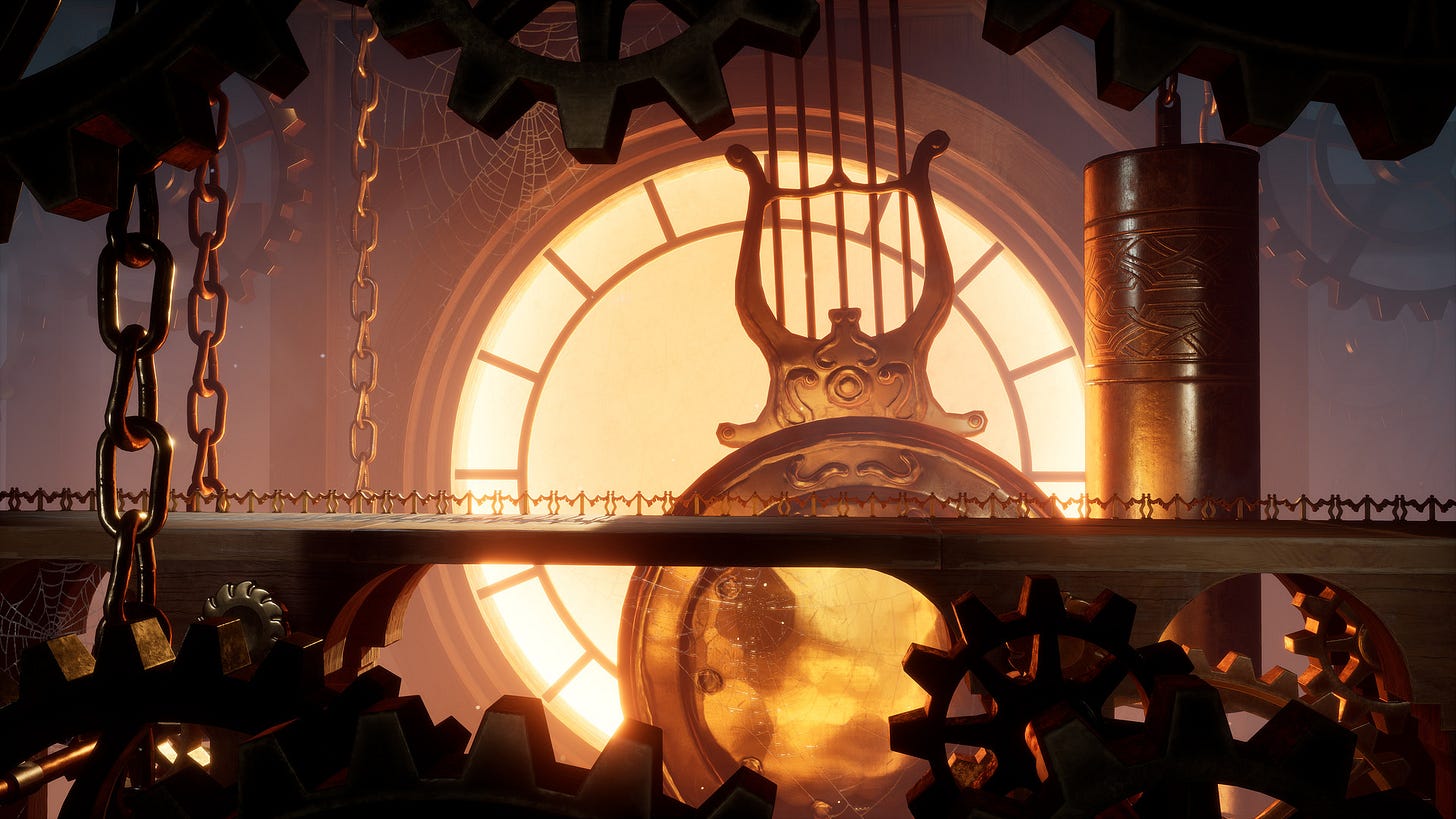It Takes Two: Pt. 3 Aesthetics & Conclusion
Hazelight Studio's growth as game-makers goes beyond just technical improvements — there's a masterclass in visual storytelling here that makes this a deeply immersive experience.
It’s worth noting that I’m basing my thoughts here on what was actually my second playthrough of It Takes Two, which was on the Playstation 5. The first time (I believe it was back in 2022) was on the Nintendo Switch.
While I was charmed by the game’s overall vibe that first time around — and obviously loved the innovative and bold co-op gameplay — the entire time I was underwhelmed with how the game looked, assuming this was a lower-budget game from a studio that was perhaps a bit too ambitious with some of the ideas it wanted to iterate.1 It also took a painfully long time to load, sometimes in the middle of cutscenes, which hurt the game’s flow. I was baffled when I learned it had won Game of the Year.

That accolade started making more sense when I played this on PS5. The ambitious ideas the developers had were finally matched in graphical execution. The bosses that were supposed to be larger-than-life (given their size compared to your miniaturized frame) were actually awe-inspiring to look at as they towered above you. The thoughtfully diverse environments sparkle with life in impressively clear display.
It Takes Two is visually impressive, which I found took it from a-very-good to one-of-my-favorite games. This is a good case study for why not only visuals but performance matters in making both great and immersive games. With the PS5 version running twice the FPS of the Nintendo Switch (and it was still choppy at 30 frames), it was much easier for the graphics to shine on my second playthrough and for me to get pulled into the game’s world.
Aside from just looking good, Hazelight makes a lot of clever and interesting choices that contribute to (like Balatro) a sort of weird, kooky, and off-beat vibe that I enjoyed.
This is most felt in a part of the game I absolutely hated for storytelling purposes, but that I must give credit to for the radical tonal statement it makes. Yes, I’m talking about the scene where you have to murder Cutie the elephant. As a reminder, this sequence takes place in Rose’s daughter’s room, which is filled with come-to-life-via-animatronics versions of all of her toys that are creating a range of “cutesy” scenes, culminating in the medieval princess castle over which Cutie rules. “Cutesy” can really be used to describe the entire feel of this level (and pretty much all of It Takes Two’s settings), but the fact this level ends with you being forced to viciously murder a VERY sweet and adorable stuffed elephant punctuates a dark-comedy tone that is always simmering under the veil2 of sincerity. And this oddly makes It Takes Two much more charming.3
Just like with gameplay, Hazelight deserves credit for having and implementing a lot of great ideas about the presentation of It Takes Two. I was surprised and delighted throughout the game as new visual twists appeared, often at critical parts of the story that underscored something important was happening. A lot of these tricks involved messing with the split-screen display — a wise choice since there are so few AAA games that demand to be played cooperatively. As a result, Hazelight gets to chart a lot of unplumbed depths in this genre. There’s an earned-payoff I quite liked that shows what I’m talking about here:
The set-up comes in It Takes Two’s second level, when Cody and May are still very much at odds and fully on board for getting a divorce. In a moment intended to show players how small they are (and how massive the setting is), you cross a bridge that dissects this huge, hollowed-out tree.4 The camera peels back as you make your way across, but the screen stays split.5
The next bridge-crossing set piece like this is in the fifth level, when Cody and May’s dynamic is beginning to warm a bit. You run across a long, narrow path within a giant clock and the camera pulls back, but this time, the players share the same display — and the grandeur of the setting hits a little harder. Then, in the cutscene at the end of the level, Cody and May are being forced along the cuckoo clock’s track, with the split-screen display tracking both characters’ movement all the way until they meet face to face at the end of the line, and the splitscreen border fades away in perfect time, spotlighting an awkwardly romantic moment — the sweetest yet between the game’s protagonists.
This series of moments illustrates what I touched on in the Storytelling section for this game — that there’s a competency here I don’t think was present in Hazelight’s previous entries. The entire presentation seems more honed, thoughtful, and lovingly crafted, and it massively elevates the experience as a whole beyond just a cutesy two-player game. It knows when and how to grab your attention, and very rarely flubs on delivering something special when it does so.
Conclusion
The Game Awards got it right when they named It Takes Two Game of the Year in 2021, giving Hazelight and Josef Fares the honors over a somewhat limited field6, especially given what was to come the following year.7 While it wasn’t against the stiffest competition, It Takes Two is absolutely deserving of the acclaim it received, and I hope its success encourages more publishers to invest in premium co-op games as the market is rather bare (I promise I’m not going to pay EA too many compliments here, but this, Unravel Two, and (as of March 6) Split Fiction are impressive titles to have in their portfolio).
Speaking of Split Fiction, I’m excited to start playing this newly released title. The reviews have been glowing, though I am a little unnerved by an article I just saw that said this new entry is more difficult than its predecessor — given the flowers I gave Fares and Co. for how well they understood the typical audience for couch co-op games.
Given the strides the studio made from A Way Out (which was an enjoyable, albeit sometimes flawed, experience) in 2018 to It Takes Two three years later, I’m not surprised that Split Fiction seems to be setting the new standard for co-op gameplay with another mind-blowing split-screen audio and visual spectacle. What I’ll be curious to see — once I get my hands on it — is if Fares and Hazelight once again strike gold with the story for their new title, or if It Takes Two was just a flash in the pan. If they can deliver on this final pillar, they could have another GOTY contender on their hands, and fans (like me) will be in for another deeply moving and immersive experience.
Thanks for reading The 3 Pillars of Immersive Games! If this is your first time visiting my Substack, I encourage you to read this site’s Introduction, which explains my theory on immersion in gaming, why this is something game-makers strive to achieve, and how successful games immerse players.
Click here to read about the next game in this series, Dragon Quest III HD-2D Remake
This wasn’t a crazy assumption, given how technically limited A Way Out was when it released in 2018 — the same year God of War, Marvel’s Spider-man, and Red Dead Redemption 2 came out.
Pot Lid?
Although not exactly when you’re ritual-killing ol’ Cutie.
That squirrels and wasps are having a blood-soaked border conflict within.
A metaphor for the schism in their relationship, perhaps?!
Other nominees that year included Deathloop, Metroid Dread, Psychonauts 2, Ratchet & Clank: A Rift Apart (I love this game, and will write about it somewhere when I’m finished with whatever this is), and Resident Evil Village.
Elden Ring, God of War: Ragnarok, A Plague Tale: Requiem, and Horizon: Forbidden West — the last two will have their own chapters in this blook.






